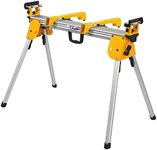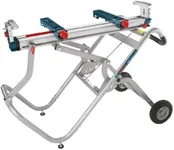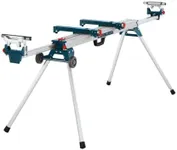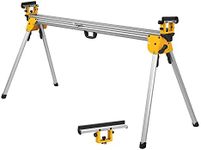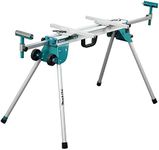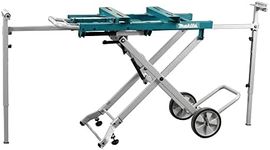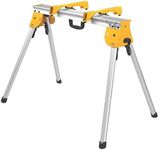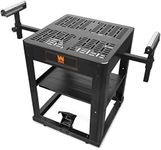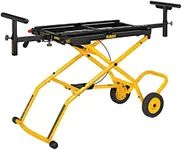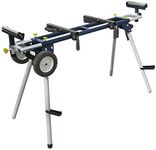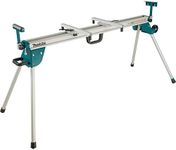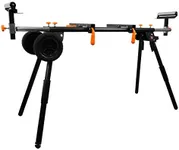Buying Guide for the Best Miter Saw Stands
Choosing the right miter saw stand can make your woodworking or construction projects much easier and safer. A good stand provides stability, portability, and convenience, allowing you to work more efficiently and accurately. When picking a miter saw stand, it's important to consider how and where you'll use it, the size and weight of your saw, and the types of materials you'll be cutting. Understanding the key features will help you find a stand that matches your needs and makes your work smoother.Weight CapacityWeight capacity refers to the maximum amount of weight the stand can safely support, including your miter saw and the material you are cutting. This is important because overloading a stand can make it unstable or even cause it to collapse. Stands typically range from supporting around 200 pounds to over 500 pounds. If you mostly work with small trim or light materials, a lower capacity stand may be sufficient. However, if you plan to cut large, heavy boards or use a heavier saw, look for a stand with a higher weight capacity to ensure safety and stability.
PortabilityPortability describes how easy it is to move and transport the stand. Some stands are lightweight and fold up compactly, making them easy to carry and store, while others have wheels for rolling them around a job site. If you need to move your stand frequently or work in different locations, a portable, foldable stand or one with wheels will be more convenient. If your stand will mostly stay in one place, portability may be less important.
Material Support LengthMaterial support length is the maximum length of material the stand can hold while keeping it stable. This is important for cutting long boards or trim pieces, as it prevents sagging and helps you make accurate cuts. Stands often have extendable arms or supports that can hold materials from a few feet up to 16 feet or more. If you often work with long pieces, choose a stand with longer or adjustable supports. For shorter materials, a more compact stand may be enough.
CompatibilityCompatibility means how well the stand fits different brands and sizes of miter saws. Some stands are universal and can fit almost any saw, while others are designed for specific brands or models. It's important to check that your saw can be securely mounted to the stand. If you have or plan to use different saws, a universal stand offers more flexibility. If you only use one saw, make sure the stand is designed to fit it properly.
Ease of SetupEase of setup refers to how quickly and simply you can assemble, adjust, and break down the stand. Some stands have quick-release clamps or tool-free adjustments, making them faster and easier to use, while others may require more time and effort. If you value convenience or need to set up and pack away your stand often, look for features that make setup and takedown simple. If your stand will stay in one place, this may be less of a concern.
StabilityStability is about how steady the stand remains during use, especially when cutting heavy or long materials. A stable stand reduces the risk of accidents and helps you make more precise cuts. Features like wide legs, non-slip feet, and solid construction all contribute to stability. If you work on uneven surfaces or with heavy materials, prioritize a stand with strong stability features. For lighter work or smooth floors, basic stability may be sufficient.
